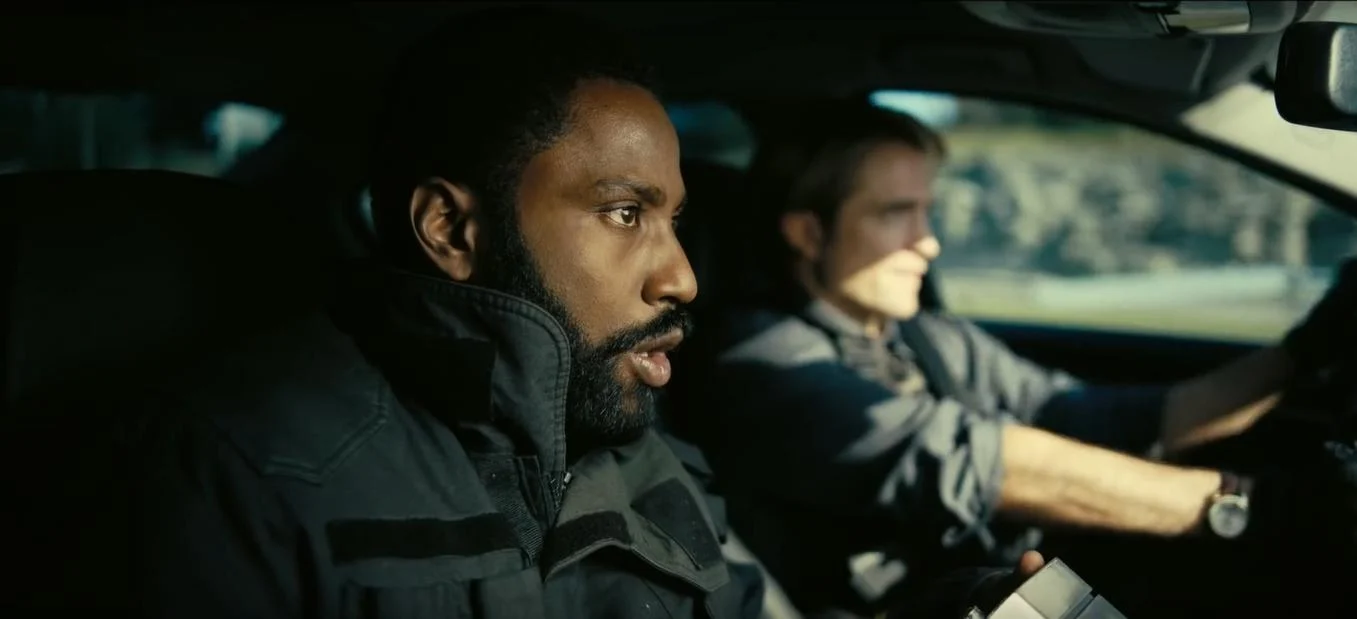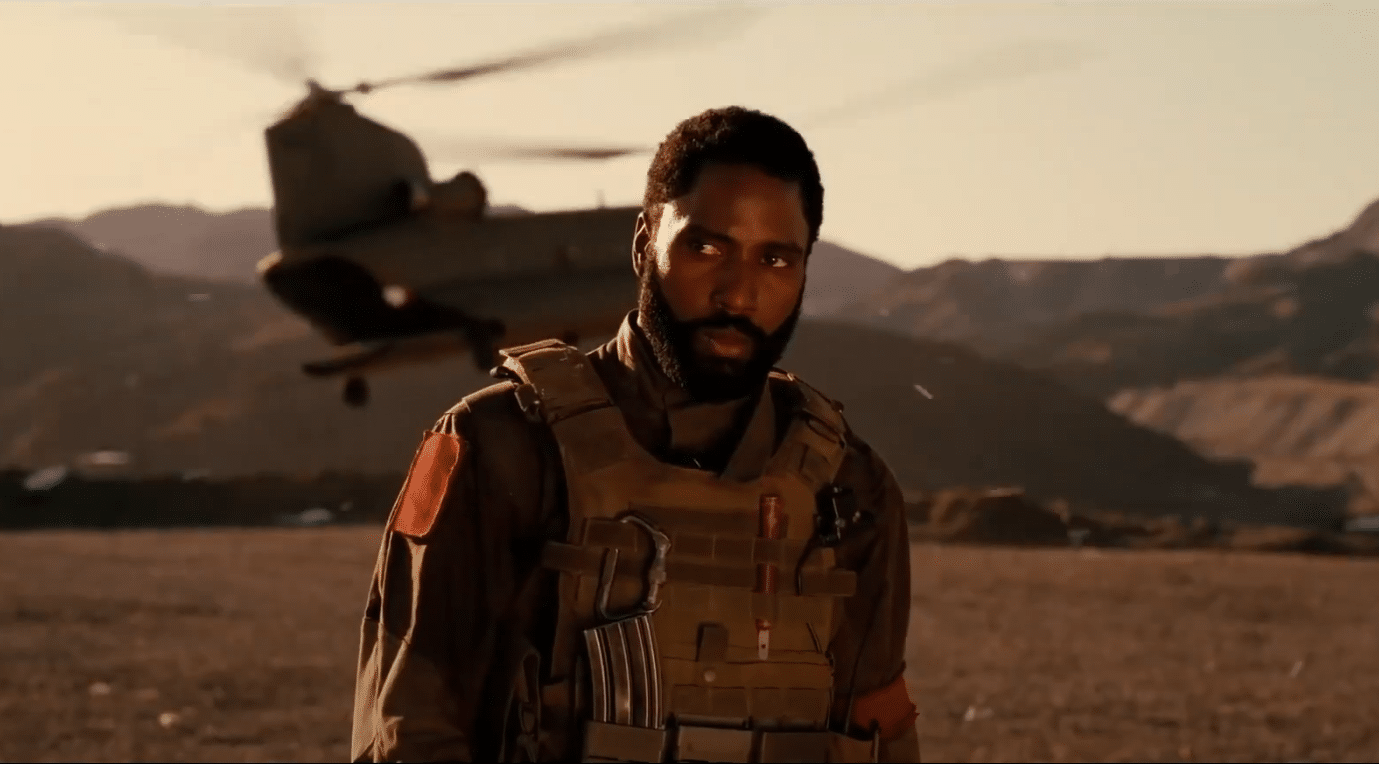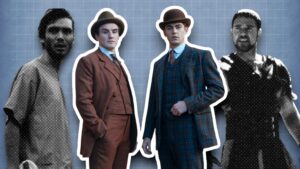Like countless others have and will, after enduring a two-and-a-half-hour long migraine-inducing cinematic experience, you need Christopher Nolan’s Tenet explained. But as I intend to make extremely clear within the review section of this article, the confusion wasn’t due to the screenplay’s intellectualism; rather it was due to the screenplay’s clumsy story handling and entirely convoluted nature. Spoilers ahead.
If you haven’t seen Tenet, none of this will make the slightest sense. If you have seen Tenet… there’s still no guarantee this will make any sense to you.
Tenet Explained: Breaking down the timeline
Linear
- We’re introduced to a CIA operative who is literally named The Protagonist (portrayed by John David Washington). Because meta, I guess.
- The Protagonist is tasked with foiling a terrorist siege at the opera in Kiev and retrieve plutonium, which is apparently standard opera-going kit in Kiev.
- The Protagonist is almost executed until a mysterious masked gunman with a red string on his backpack saves him by not just shooting – but reverse shooting the assailant. Which is still just shooting if you really think about it, but as we’re told later in the film/in the trailer, you’re catching the bullet instead of letting it fly. Semantics.
- The Protagonist is swiftly abducted and tortured for information soon after. He opts to pop a cyanide pill and ostensibly carks it.
- The Protagonist wakes up not-dead. Surprise, surprise. That was all just a test, and he is recruited into some secret organisation. So secret, in fact, not even they’re sure what they’re doing. Or at least that’s what we’re led to believe.
- The Protagonist sneaks into a secure facility to learn more about reverse bullets. This is when we learn that in the future, they figure out a way to reverse entropy so things can travel back in time instead of forwards. The why and the how is vaguely addressed which made the dude with an actual Masters in Physics sitting next to me snort like I’ve never heard anyone snort before. And then when the scientist (portrayed by Clemence Poesy) kind of just shrugs and says, “Yeah, I don’t know either. Don’t think about it… feel it”, that’s when I snorted.
- The source of all these reversed-material is “the detritus of a war” that’s more dire than World War III. The Protagonist follows the clues all the way to India where he links up with another covert operative going by the name of Neil (portrayed by Robert Pattinson) who no one really knows anything about. Together, they source the manufacturer of the reverse bullet. Neil is very obviously keeping some cards close to his chest.
- The Protagonist and Neil break into the compound of a billionaire arms dealer to confront him about it. The real billionaire arms dealer is his wife Priya, who turns out to be the true mastermind behind the scenes. She points them in the direction of Andrei Sator (portrayed by Kenneth Branagh). Another billionaire arms dealer who is somehow communicating with the future and controls the reverse entropy technology.
- After a scene which didn’t actually need Michael Caine but was a giggle anyway because of his Brooks Brothers crack, they decide to lift the classic Pornhub tactic: worming their way in through Sator’s estranged wife Kat (portrayed by Elizabeth Debicki), who is being held hostage in a shitty marriage because arms dealers don’t always make the best husbands; and because dearest hubby is also blackmailing her for authenticating a forged painting which could land her in jail. Weird narrative justification, I know, and surely someone who worked in the CIA (i.e. The Protagonist) could fix that up with a few backchannel deals. I mean… it’s the CIA. They’ve overthrown democratically elected governments throughout history before. Surely concealing a bit of white-collar crime isn’t too far of a stretch. But it turns out they needed this particular detail to conveniently tee up the next scene at the Oslo freeport where the painting is being held, so let’s just suspend disbelief and go with it. Kat mentions seeing a woman jumping off Sator’s superyacht as she left him during their vacation in Vietnam and wanting to be as free as her.
- To earn Kat’s trust and get a face-to-face with Sator, The Protagonist and Neil plan an elaborate heist which involves crashing a Boeing 747 into an airport to steal the fake painting and take blackmail out of the equation for her (which Nolan actually pulled off with practical effects because he’s Hollywood’s biggest Chad director).
- The Protagonist and Neil break in and ostensibly succeed, only to encounter two masked men: one who appears to be following regular forward time flow and one who’s reversed. Neil chases the regular one, The Protagonist fights the reversed one. Neil manages to tear the mask off the man he pursues, discovering his identity off-camera, before letting him go and lying to The Protagonist about what happened.
- Kat agrees to set up a meeting between The Protagonist and Sator. After a series of unintended events, The Protagonist has his life threatened by Sator but bargains his way out by agreeing to steal plutonium from an armoured car.
- The operation is a success, but during the escape, they encounter time reversed cars. The Protagonist hands off the plutonium case without the plutonium, and it seems as though they’ve won. Until a kill squad descends upon them and intercepts both The Protagonist and Kat.

Reverse
- There’s a stand-off. Exploiting The Protagonist’s humanity, Sator holds Kat at gunpoint to coerce him into surrendering the plutonium’s location. He yields, Kat is shot in the stomach, all hope seems lost. Sator and his gang have apparently been working both sides of time in something known as a ‘temporal pincer movement’ using a ‘temporal stile’/not-a-time-machine-time-machine; which is why they’ve been a step ahead this whole time.
- Neil calls in the ‘cavalry’, which are – get this – time travelling Special Forces led by Ives (portrayed by Aaron Taylor-Johnson). Ives explains a bunch of shit that vaguely matters – more to make sure the audience is keeping up than anything else – which includes the fact that they can only save Kat by going
back in timereverse time. They do that and The Protagonist decides to go after Sator to prevent him from getting the plutonium.
- The Protagonist realises he was the driver behind that reversed car we saw just moments ago. The plutonium is lost. Sator’s plan comes to light: he wants to use said plutonium to end the world by mass reversing entropy because – get this x2 – he’s dying of inoperable pancreatic cancer. And if he has to die, everyone has to die. Eugh. Weak, right? He returns to that vacation in Vietnam to have one last happy moment before he commits suicide and triggers the doomsday device (apparently linked to his heartbeat like a dead man’s switch).
- In order to help Kat heal, The Protagonist and Neil need to break into the Oslo freeport again during their first mission together to access the temporal stile and accelerate forward. This is when shit gets funky. Tying everything together, it turns out that The Protagonist was the masked man reverse fighting himself all along… in the past and the future(?)
- Now, with everyone sorted out for the most part and the audience rubbing their temples, The Protagonist, Neil, and Ives need to travel back in time to retrieve the doomsday device from a Soviet-era site and ensure it never becomes operational. Meanwhile, Kat has to stall Sator long enough so he doesn’t kill himself and trigger said doomsday device.
- Shockingly, after some minor complications, the good guys get their hand on the doomsday device. Interestingly enough, they encounter a dead man with the same red string on his backpack who comes back to life in reverse and unlocks a gate, which allowed The Protagonist and Ives to accomplish the mission in a critical moment. Kat kills Sator – note: the older version of Sator who has been through the entire film’s events, not the one that was originally in Vietnam needed to uphold the timeline’s continuity which did confuse me at first. Kat dives off the superyacht, catching a glimpse of herself in the past, implying the woman she once saw diving was herself all along, and everyone goes their separate ways.
- As they part, Neil reveals that The Protagonist is the one who recruits him in the former’s past/latter’s future. Neil has actually known The Protagonist for years and makes a sentimental remark about their relationship. Personal theory: Neil is Max (Kat’s son). As he turns, we see Neil’s backpack features the red string.

Epilogue
- The Protagonist travels back in time to stop Priya from killing Kat for a reason that is wildly unnecessary and didn’t serve any meaningful purpose. “Tying up loose ends.” Yucky.
- Mic drop moment – he alludes to the fact he has been leading the whole Tenet operation for the last two years. Meaning he was the one who formed Tenet all along. Which is either the most genius plot device ever or the dumbest shit you’ve ever heard depending on who you ask/what time of day it is/how many beers deep you are. Think about it… The Protagonist pretty much ordered to have himself beaten up and tortured, just to be recruited. By himself. Fuck it, sure. Why not?
- As implied by the red string revelation but never explicitly illustrated on camera, Neil would later be recruited by The Protagonist in this timeline and save him at the opera siege in Kiev, setting the whole continuity in motion once again. We can only assume that given this is all part of the continuity, Neil still dies at the Soviet site for the sake of mission success. A closed circle.
And then, of course, you later learn Tenet is really an allegory about climate change. Which doesn’t make it inherently bad, but like Christian rock, it makes the film roughly 15-20% more lame. I don’t make the rules, thems just the way it is, folks.
Was Tenet a concept destined to fail on paper?
This was an immensely ambitious project. Similar to many of my failed relationships, it was one that I desperately wanted to be in love with. The issue? On multiple occasions, it felt as if Nolan had written himself in a corner. The concept of ‘inversion’ – while admittedly pretty damn cool, slightly more refreshing than regular time travel, and a sight to behold when conveyed visually – is one which seemed as though it required far too much explanation when explored through dialogue. When exposition is made to be a necessity, the story naturally suffers.
Hampered by an obligation to make sure the audience is keeping up with you every step of the way, the flow-on impact is that interactions between each of the characters become stilted, awkward, and one-dimensional. The characters themselves don’t get a fair shot of demonstrating growth because all real estate is taken up by the bloated concept; and every other element of the plot just has to be more superficial to accommodate because – ironically – there’s simply no time left.

The truth of the matter is, despite what everyone is saying online, the concept of ‘inversion’ isn’t really a complex one. There’s physics jargon involved which is layered on to add legitimacy and scientific weight, sure, but the very essence of the concept and the rules are clear cut:
- We run/perceive time in a linear forward fashion.
- There’s technology which allows the opposite.
- Reversing entropy for the entire planet means everything ceases to exist.
- In terms of Tenet’s not-time-travel brand of time travel, we’re dealing with Harry Potter & The Prisoner of Azkaban not Back To The Future. Translation: you cannot automatically change the continuity with actions, only uphold it by fulfilling paradoxes; in other words, everything that has ever happened has already happened.
When you view the film using that four-rule frame, the palindrome becomes clear. To the point where you can anticipate what’s coming. As hinted by The Protagonist’s question about whether the fact they were there means the “end” never happened – yes. Yes it does. But the story has to keep going because, once again, they have the uphold the continuity.
Yet throughout Tenet‘s entire run, it felt as is there was a major lack of faith in the everyday person’s ability to deduce the beats of the story and infer the mechanics of the universe. Granted, there’d be a lot to deduce and infer. But if audience and auteur were to meet half-way, that alone would free up a whole lot more real estate in the story for stuff that wasn’t ‘inversion’, i.e. character development. Maybe then, Sator’s entire arc wouldn’t have just been as basic as, “If I’m going down, I’m taking every last one of you fucks with me.”
The real tragedy of Tenet explained

Nolan has successfully made this film before. No, this isn’t some stupid inversion-opposite day neg. If we break down the individual elements of Tenet, we’ve seen them executed masterfully across his other works:
- Non-linear storytelling – Memento
- High-concept sci-fi – Inception
- High-concept sci-fi steeped in theoretical science – Interstellar
- Narrative symmetry into a full-circle story – Inception, Interstellar
- A nihilistic villain who quite literally wants to watch the world burn/stop existing – The Dark Knight
So what went wrong? Was it simply too much to pack into one project? Did Nolan finally succumb to the weight of his own incredible ambition? Who’s to say. The only thing that’s clear is we know he’s capable of making it work. The execution this time around, however, wasn’t up to scratch and ultimately fell flatter than it should. Especially considering it was birthed from a director of his calibre. When you sit down for a Nolan film, you come with the expectation that you’ll be captivated from start to finish – not begging for it to end. Perhaps we’ll all look upon it more kindly with subsequent viewings. For the time being, however, I don’t even see a subsequent viewing happening on my part at all.
Additional notes
- The cast knocked it out of the park, not a weak performance between them despite how glancing.
- Either I’m losing my hearing at a far greater rate, the cinema dun goofed, or the sound mixing was off – dialogue seemed drowned more often than not.
- That being said, the sound effects and soundtrack were spectacular.
- As was the visual spectacle – from the large-scale sequences like the truck hijacking/car chase and Boeing 747 crash to the more basic ones like reverse-fight choreography.
- I want to see Christopher Nolan direct a Bond film.








![[INTERVIEW] 'F1' Director Joseph Kosinski On The Upside Of Streaming & Sequels Starring Tom Cruise](https://www.bosshunting.com.au/wp-content/uploads/2025/12/INTERVIEW-F1-Director-Joseph-Kosinski-On-The-Upside-Of-Streaming-Sequels-Starring-Tom-Cruise-300x169.webp)


![Are You Still Watching Soon You Won't Have A Choice [Netflix x Warner Bros]](https://www.bosshunting.com.au/wp-content/uploads/2025/12/Are-You-Still-Watching-Soon-You-Wont-Have-A-Choice-Netflix-x-Warner-Bros-300x169.jpg)




